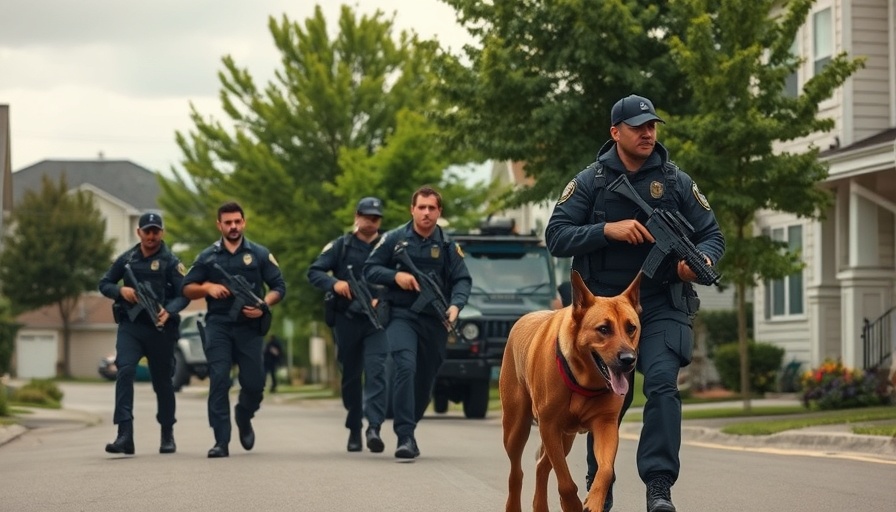
Exploring the Alarming Findings in Minnesota's Recent Tragedy
The recent shocking incident involving the assassination of Minnesota state lawmaker Melissa Hortman and the shooting of State Senator John A. Hoffman has sent shockwaves through the community. The suspected gunman, Vance Boelter, carried a notebook detailing nearly 70 potential targets, which included a mix of local politicians, community leaders, and abortion providers. This disturbing discovery raises urgent questions about safety and political vitriol in today’s society.
The Notable Targets: Who Was at Risk?
The notebook reportedly named several prominent figures, primarily Democratic lawmakers, prompting renewed concerns about the increasing hostility lawmakers face today. Among those listed were well-known representatives like Ilhan Omar and Kelly Morrison, as well as Senator Tina Smith, who noted the importance of immediate security measures for affected individuals. Given the heightened political tensions and the rise in targeted threats against officials, many community leaders are left to ponder the implications for public safety and political discourse.
Understanding the Motive: A Deep Dive into Extremism
Boelter’s motivations remain unclear, yet his prior association with lawmakers adds to a troubling narrative of extremist behavior infiltrating politics. The mention of “No Kings” protests in his notebook signals a connection to broader anti-establishment sentiments, with potential ties to recent nationalism movements. The research identified in the aftermath has sparked discussions on the need for a more significant crackdown on such ideologies. As society grapples with these rising threats, understanding the psychological drivers becomes crucial.
Community Response: Mobilizing for Safer Spaces
In light of these alarming events, communities are taking proactive measures. The necessity for security vigils and preventive strategies has emerged, with local residents rallying around their representatives. Workshops on recognizing early signs of radical behavior and community engagement initiatives are being explored to promote collaboration in safeguarding local governance and public spaces.
Historical Context: The Rise of Targeted Violence
This incident fits into a concerning trend of assaults against officials that have grown in America over the past decade. Political assassinations and violence have become unsettling hallmarks of an increasingly polarized society. Comparatively, high-profile cases involve increased threats to public figures, underscoring a necessity for discussions on mental health resources, the consequences of inflammatory rhetoric, and enhancing awareness across communities.
The Future of Political Safety: Trends and Predictions
As the landscape of political safety continues to evolve, experts predict heightened security protocols may become commonplace at public events and during legislative sessions. Collaborations between law enforcement, mental health services, and legislative bodies may be vital in crafting a framework that prioritizes safety while promoting open dialogue. The need for addressing the root causes of violence while fostering a healthy political climate has never been more paramount.
Taking Action: What Can You Do?
Every individual can contribute to a safe political environment. Engaging with community discussions, attending public forums, and advocating for mental health resources are just some actions citizens can take to influence change. Moreover, supporting initiatives that promote inclusive discourse and political engagement can help diminish divisions that lead to acts of violence.
In conclusion, the tragic events surrounding the Minnesota shootings remind us of the critical importance of nurturing a safe, respectful political discourse. It’s essential not only for the safety of our representatives but for the health of our democracy. Let’s work together to create a community where dialogue flourishes, and violence becomes an antiquated notion.
If you’re concerned with political safety and want to enrich your community’s resilience, consider participating in local advocacy groups and promoting conversations that bridge divides.
 Add Row
Add Row  Add
Add 




 Add Row
Add Row  Add
Add 

Write A Comment